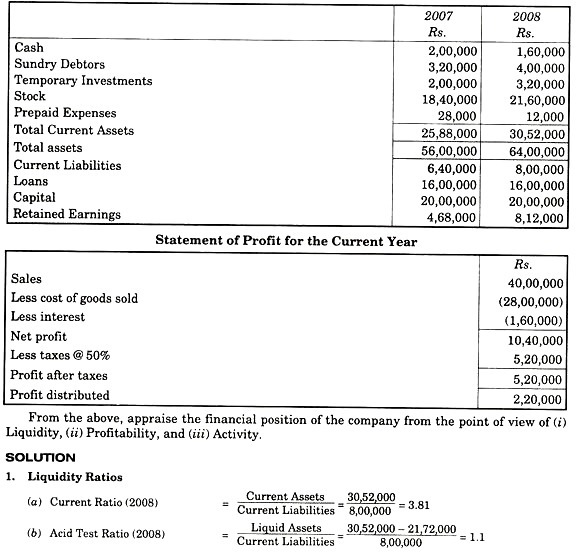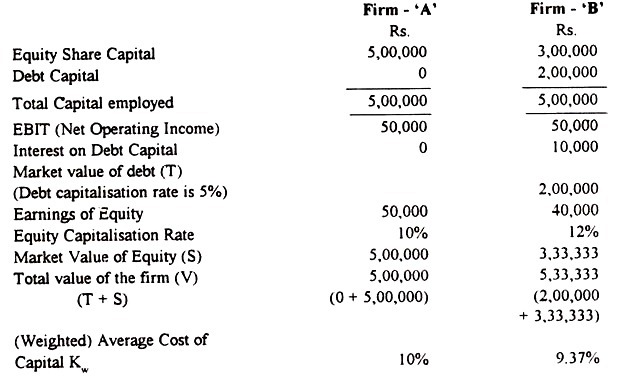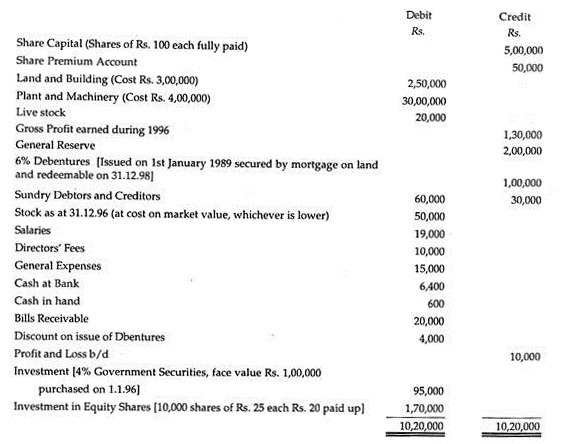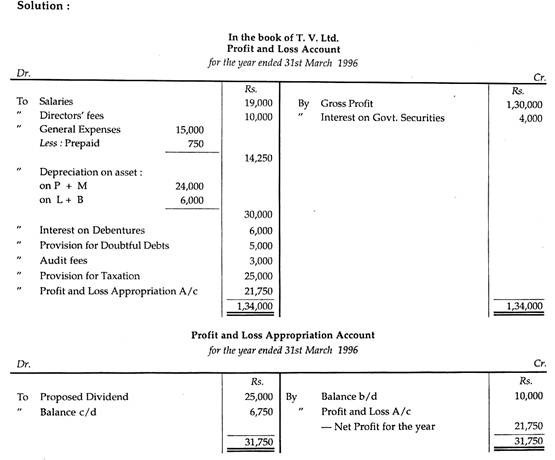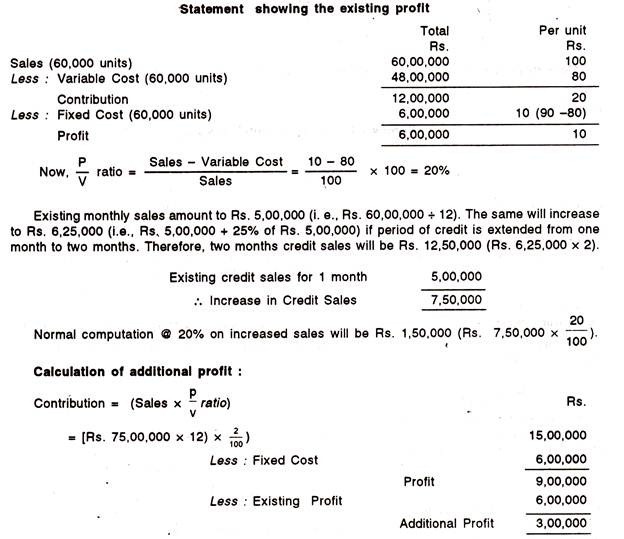Here we detail about the two ways for preparing the bank reconciliation statement, i.e., (i) Without Adjusting Cash book Balance. (ii) After Adjusted Cash Book Balance.
Now we shall move to study the steps taken in preparation of bank reconciliation statement in each of the above cases.
(I) Preparation of Bank Reconciliation Statement without Adjusting Cash Book Balance:
Under this approach, the following steps are to be taken:
ADVERTISEMENTS:
Step 1:
All items appearing in the bank pass book should be checked and ticked with the items appearing in cash book.
Step 2:
The un-ticked items in both the books i.e. cash book and pass book are listed according to their nature of difference.
ADVERTISEMENTS:
Step 3:
Put the balance of cash book or pass book as the first item in bank reconciliation statement. The favourable balance of cash book (i.e., debit balance) or pass book (i.e., credit balance) is to be shown under ‘plus’ column and unfavourable/overdraft balance of cash book (i.e., credit balance) or pass book (i.e., debit balance) is to be shown under ‘minus’ column of the bank reconciliation statement.
Step 4:
All items which have caused the difference between the balance as per cash book and balance as per pass book are to be examined and analyzed. In this analysis, the impact of the transactions on the balance as per cash book should be taken, if starting point is the balance as per pass book. However, if starting point is the balance as per cash book then the impact of all transactions on the balance as per pass book should be taken.
ADVERTISEMENTS:
Step 5:
The impact of errors and omissions in both the books is to be analyzed and their affects should be suitably noted in the bank reconciliation statement. Such errors and omissions may cause decrease/increase in the balance of cash book or increase/decrease in the balance of pass book.
Errors, that have caused decrease in the balance of cash book, shall be added, if the starting point is the cash book and vice-versa, when the starting point is pass book. Similarly, errors that have caused increase in the balance of cash book shall be deducted, if the starting point is the cash book and vice-versa when the starting point is the pass book.
Step 6:
ADVERTISEMENTS:
The ‘plus’ and ‘minus’ columns are to be balanced.
Step 7:
Put the difference as ‘Balance as per Cash Book/Pass Book’ or ‘Overdraft Balance as per Cash Book/Pass Book’ as the case may be.
In the above paragraphs, we have discussed the general points that have to be kept in view while preparing the bank reconciliation statement. Now, we shall move to discuss some additional and specific steps required for preparing bank reconciliation statement when:
ADVERTISEMENTS:
(A) The starting point is balance as per cash book (favourable or unfavourable) and
(B) The starting point is balance as per pass book (favourable or unfavourable).
(A) When Starting Point Is Balance as Per Cash Book:
If bank reconciliation statement is prepared with the favourable balance of cash book (i.e., debit balance of cash book) or unfavourable balance/overdraft balance of cash book (i.e., credit balance of cash book), the impact of all transactions on the pass book shall be examined.
The transactions shall be recorded in the bank reconciliation statement as under:
ADVERTISEMENTS:
(i) Add: All those transactions that have resulted in increasing the balance of pass on book.
Example:
Cheque issued on 15th March, 2011 but not presented for payment up to 31st March, 2011 Rs. 10,000.
Impact:
ADVERTISEMENTS:
In this case, the issue of cheque has been recorded in the cash book on the payment side but it was not entered in the pass book. Therefore, bank balance as shown by cash book would have been shown at lower than the balance as shown by the pass book. In other words, the balance shown by the pass book would be higher than the balance shown by cash book to the extent of that cheque.
Treatment:
The amount of cheque issued but not presented shall be shown in the ‘Plus Column’ as under:
Example:
A cheque of Rs. 23,500 received from Ram Lal, deposited in the bank; however, the bank could not collect the amount till 31st March, 2011.
Impact:
ADVERTISEMENTS:
In this case, the deposit of cheque has been recorded in the cash book on receipts side but it was not entered in the pass book Therefore, bank balance as shown by cash book would have been shown at higher than the balance as shown by the pass book. In other words, the balance shown by the pass book would be lower than the balance shown by cash book to the extent of that cheque.
Treatment:
The amount of cheque deposited but not cleared shall be shown in the ‘Minus Column’ as under:
(B) When Starting Point Is Balance as Per Pass Book:
If bank reconciliation statement is prepared with the balance of pass book, either favourable (credit) or overdraft (debit) balance, the impact of all transactions on the cash book shall be examined.
The transactions shall be recorded in the bank reconciliation statement as under:
(i) Deduct:
All those transactions that have resulted in decreasing in the balance as per cash book
Example:
Cheque issued on 15th March, 2011 but not presented for payment up to 31st March, 2011 Rs. 10,000.
Impact:
In this case, the issue of cheque has been recorded in the cash book on the payment side but it was not entered in the pass book. Therefore, bank balance as shown by cash book would have been shown at lower than the balance as shown by the pass book. In other words, the balance shown by the pass book would be higher than the balance shown by cash book to the extent of that cheque.
Treatment
The amount of cheque issued but not yet presented shall be shown in the ‘Minus Column’ as under:
All those transactions that have resulted in increasing the balance as per cash book
Example:
A cheque of Rs. 23,500 received from Ram Lal, deposited in the bank; however, the bank could not collect the amount till 31st March, 2011.
Impact:
In this case, the deposit of cheque has been recorded in the cash book on receipts side but it was not entered in the pass book. Therefore, bank balance as shown by cash book would have been shown at higher than the balance as shown by the pass book. In other words, the balance shown by the pass book would be lower than the balance shown by cash book to the extent of that cheque.
Treatment:
The amount of cheque deposited but not cleared shall be shown in the ‘Plus Column’ as under:
(II) Preparation of Bank Reconciliation Statement after Adjusting Cash Book Balance (Corrected Cash Balance):
The bank reconciliation statement helps only to reconcile the balance. It may “happen that neither cash book balance nor pass book balance is correct, because some receipts/ payments, though recorded in cash book, may be missing from pass book and similarly some receipts/ payments, though recorded in the pass book, may be missing from cash book.
In that eventuality, the question arises which bank balance is to be shown in the balance sheet of the business enterprise? At the end of an accounting year, however, only actual bank balance is to be recorded in the balance sheet. Hence, there is an urgent need to ascertain the correct bank balance.
To overcome this situation, a technique has been evolved by which not only correct bank balance can be known and reported in the balance sheet but a proper reconciliation can also be done. This is known as preparation of bank reconciliation statement after adjusting cash book balance.
The entries/errors recorded in both bank column of cash book and pass book are to be examined along with the other information available to compute the correct bank balance and then bank reconciliation statement shall be prepared with the correct bank balance as per cash book.
Step 1:
Check Receipt Side of Cash Book:
Analyse all transactions recorded on the ‘Receipts’ side of the cash book and find out those transactions which were recorded on the receipts side but were not actually receipts. These transactions have led to increase in the balance of cash book only, so these items should be subtracted from the cash book. For example, a cheque of Rs. 2,000 has been wrongly entered in the cash book as a receipt.
Step2:
Check Payment side of Cash Book:
Analyse all transactions recorded on the ‘Payments’ side of the cash book and find out only those transactions which were recorded on the payments side but were not actually payments. These transactions have led to decrease in the balance of cash book only, so these items should be added to the balance of cash book. For example, a cheque for Rs. 1,000 had been wrongly entered in the cash book as payment.
Step 3. Check Receipts of Pass Book:
Analyse the deposits recorded in the pass book but omitted to be recorded in the cash book and find out only those transactions, which were recorded as deposits in the pass book and were also actual deposits. Now imagine, had these items been recorded in the cash book, the cash book balance would have been more than the balance which is appearing presently.
It means that these omissions have led to decrease in the balance of cash book, so these items should be added to the balance of cash book. For example, a dividend of Rs. 5,000 was credited by the bank and no entry is made in the cash book.
Step 4. Check Payments of Pass Book:
Analyse the withdrawals recorded in the pass book but omitted in the cash book and find out only those transactions, which were recorded as withdrawals in the pass book and were also actual withdrawals. Now imagine, had these items been recorded in the cash book, the cash book balance would have been lower than the balance which is appearing presently.
It means that these omissions have led to increase in the balance of cash book, so these items should be subtracted from the balance of cash book. For example, a cheque for Rs. 4,000 had been dishonoured, however, no adjustment had been made in the cash book.
Step 5. Corrections in Cash Book:
Examine and adjust all errors and omissions in the cash book. However, no adjustment is to be made in respect of errors and omissions in the pass book. For example, a cheque drawn for Rs. 1,050 had been incorrectly entered in the cash book as Rs. 1,500, a cheque for Rs. 500 has been entered as a receipt in the cash book instead of as payment etc..



